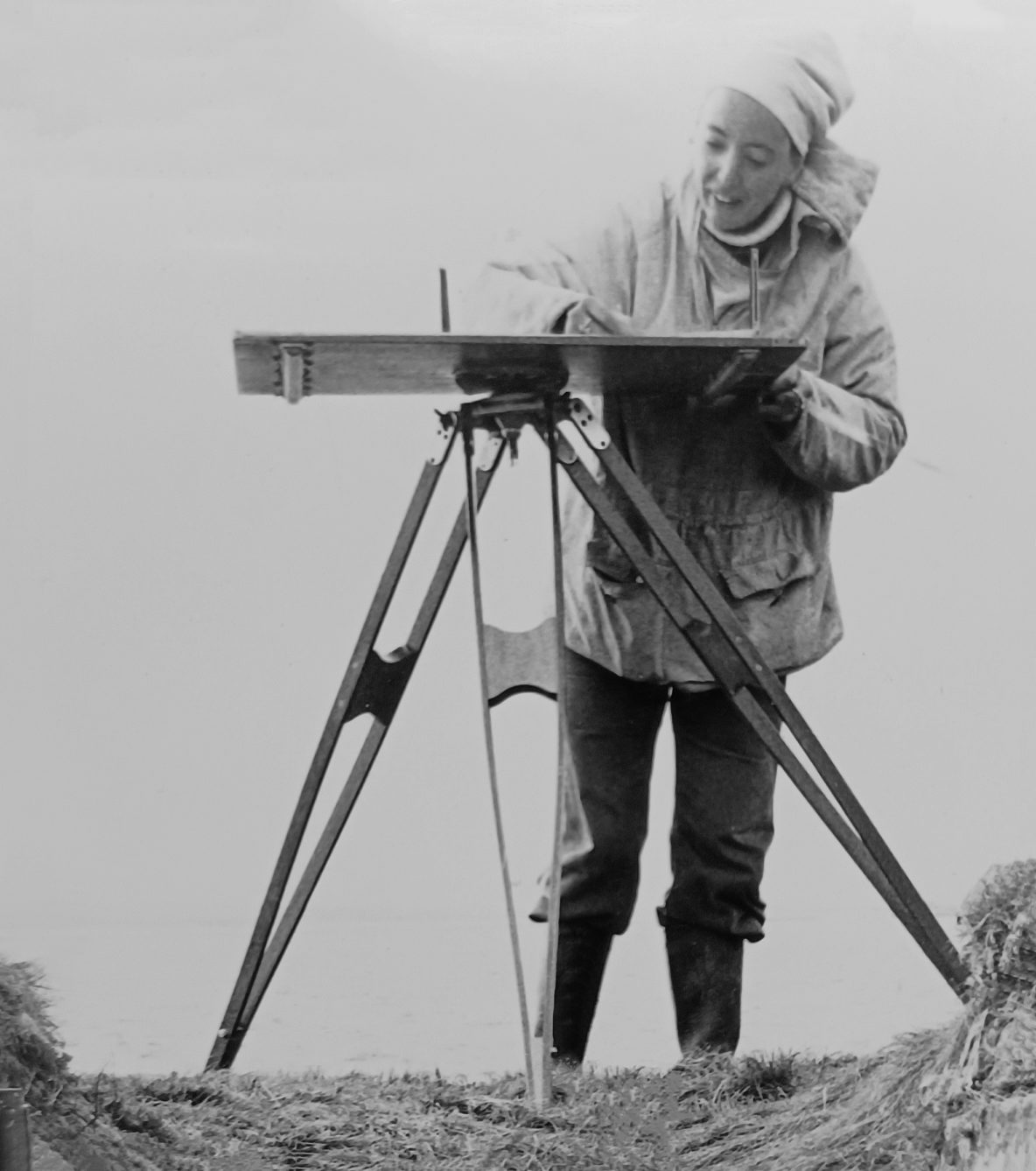Anna Ritchie, OBE, BA, PhD, FSA, Hon FSA Scot
It is not easy to disentangle all the varied elements of Anna Ritchie’s long career. Excavation, archival research, writing, editing, working on various boards of museums and historic interest associations – all of these and more were intertwined over the years. Only a handful of examples have been picked out here, before going on to focus on why it is appropriate that the Pictish Arts Society and the Scottish Society for Northern Studies should come together to celebrate her contribution to both their fields of interest.
The young Anna Bachelier arrived in Edinburgh as a postgraduate student in the Department of Archaeology at an exciting time for Scottish archaeology, and for Pictish and northern studies. The Abercrombie Professor was Stewart Piggot, who roughly ten years earlier had participated in the seminar and publication of The Problem of the Picts. Isabel Henderson’s The Picts appeared in 1967. Hermann Palssón and his colleagues were generating a great deal of interest in the sagas of Iceland and the history of the northern world. Methods of dating based on radiocarbon content of organic finds and, where applicable, tree ring counts were opening up prospects of a more accurate understanding of sites where diagnostic artefacts were lacking. The Scottish Archaeological Forum was set up by and for a group of young professionals, including one J N Graham Ritchie, a fellow postgraduate student in the Department of Archaeology. Anna and Graham were married in 1968, and went on to have two children, a boy and a girl. Their partnership encompassed their working lives as well; sometimes working together both on excavations and in writing, and sometimes in parallel. As practical archaeologists, able administrators and enthusiastic communicators, their contribution to Scottish archaeology has been immense.
A paper in volume 104 of the Proceedings of the Society of Antiquaries of Scotland (hereafter Proceedings), ‘Painted Pebbles in Early Scotland,’ gives early indications of some of Anna’s strengths as a scholar. Her painstaking research through archival material to help identify the origins of museum artefacts and a careful balancing of the evidence are matched by a fluent and graceful prose style. Over the years, Anna’s list of publications grew rapidly, as she was commissioned by RCAHMS and Historic Scotland and its predecessors among others to write a number of works for general consumption. Guides to the stones at Meigle and St Vigeans, introductions to Viking Scotland, the archaeology of the northern isles (Orkney and Shetland) as well as Iona, works on Govan and the early medieval stones there brought early Scotland, and particularly the north of Scotland, to a wide public as did several joint publications with Graham. In addition to excavation reports, a number of journal papers also demonstrate her gift for archival research, identifying the likely source of antiquarian finds such as a Pictish stone from Jarlshof or tracing the careers of nineteenth century antiquarians whose contribution to learning has been accorded scant recognition. Anna’s abilities as an editor were obvious from early days too; she has several volumes of PSAS as well as a number of stand-alone works arising from conferences (including the SNSS Bute volume) to her credit. These skills were put to good use in drawing together unpublished work from past excavations, as in Kilellan Farm, Ardnave, Islay (2008) and collating the works of multi-contributor teams as in. She has also acted as a consultant for such television series as The Blood of the Vikings and Time Team. Her contributions to the Canmore database will be familiar to many.
In addition to all this, she has over the years been a Board Member of the Ancient Monuments Board for Scotland and a Trustee of both the National Museums of Scotland and the British Museum. Her expertise has also been made available to a number of other organisations, such as the Scape Trust, the Friends of Govan Old and the Tarbat Historic Trust. From 1988-92 she was a Vice-President of the Society of Antiquaries (London) and President of the Society of Antiquaries of Scotland (1990-93), and received an OBE for her services to archaeology in 1997.
There are many reasons why the Scottish Society for Northern Studies and the Pictish Arts Society should join to celebrate Anna’s work. In 1970, when a fresh-faced SSNS was yet to publish a journal and long before PAS was formed, Anna began work on a rescue excavation for the then Department of the Environment at Buckquoy, the peninsula that juts out toward the tidal island of Birsay in Orkney. A low mound at the cliff edge that covered early farmsteads was threatened by erosion and traffic damage. Some indications of what she uncovered there appeared first in volume one of Northern Studies and then in Scottish Archaeological Forum before the full publication appeared in volume 108 of the Proceedings. With ‘Excavation of Pictish and Viking-Age farmsteads at Buckquoy, Orkney,’ Anna had stepped straight into the world of Pictish and Northern Studies. Over the next few years, she returned to Orkney to excavate at sites such as the Neolithic farmstead at Knap of Howar on Papa Westray. Over the years, her interest in Picts and the northern isles led to a number of papers in Proceedings as well as other journals, and a number of works that combine scholarly attention to detail with a fluent, absorbing style that have brought the early history of Orkney and Shetland to a wider readership. Over the years, her collaborations with colleagues, including Ian G Scott, Tom Gray and John Borland have made the carved stones of the northern isles easily accessible for study. With her most recent publication appearing in 2021 (with Cynthia Thickpenny in Medieval Archaeology), perhaps the best reason for celebrating Anna’s contribution to Pictish and Northern studies is that she continues to delight in learning and sharing more about these aspects of our history.
Click here for a detailed list of Anna’s publications.
By Sheila Hainey

